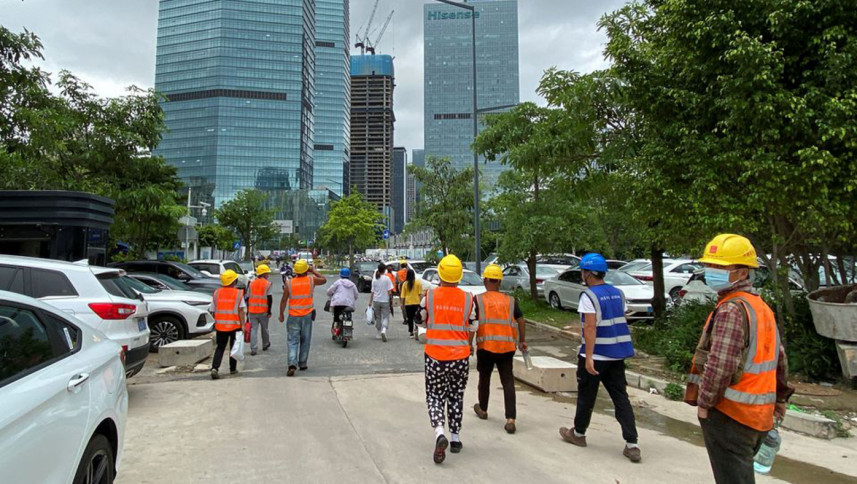In miracle city Shenzhen, fears for China’s economic future

David Fong made his way from a poor village in central China to the southern boomtown of Shenzhen as a young man in 1997. Over the next 25 years he worked for a succession of overseas manufacturers before building his own multi-million-dollar business making everything from schoolbags to toothbrushes.
Now 47, he has plans to branch out internationally by building internet-connected consumer devices. But after two years of coronavirus lockdowns that have pushed up the price of shipping and battered consumers' confidence, he worries if his business will survive at all.
"I hope we make it through the year," said Fong, surrounded by talking bears, machine parts and his company's catalogues in his top-floor office overlooking gleaming towers in an area of Shenzhen once filled with sprawling factories. "It's a tough moment for a business."
Fong's story of rags to riches, now threatened by a wider slowdown worsened by the coronavirus, mirrors that of his adopted city.
Created in 1979 in the first wave of China's economic reforms, which allowed private enterprise to play a role in the state-controlled system, Shenzhen transformed itself from a collection of agricultural villages into a major world port that is home to some of China's leading technology, finance, real estate and manufacturing companies.
For the last four decades, the city posted at least 20 per cent annual economic growth. As recently as October, forecasting firm Oxford Economics predicted that Shenzhen would be the world's fastest-growing city between 2020 and 2022.
But it has since lost that crown to San Jose in California's Silicon Valley. Shenzhen posted overall economic growth of only 2 per cent in the first quarter of this year, the lowest-ever figure for the city, aside from the first quarter of 2020 when the first wave of coronavirus infections brought the country to a standstill.
Shenzhen remains China's biggest goods exporter, but its overseas shipments fell nearly 14 per cent in March, hampered by a Covid lockdown that caused bottlenecks at its port.
The city has long been seen as among the best and most dynamic places for business in China and a triumph of the country's economic reforms. President Xi Jinping called it the 'miracle' city when he visited in 2019.
If Shenzhen is in trouble, that is a warning sign for the world's second-largest economy. The city is "the canary in the mine shaft," said Richard Holt, director of global cities research at Oxford Economics, adding that his team is keeping a close eye on Shenzhen.
Fong, who sells his goods mostly to domestic customers, said sales are down about 40 per cent from 20 million yuan ($3 million) in 2020, hurt by the recent two-month lockdown in Shanghai and a general decline in consumer confidence. China's strict travel rules mean he has not been able to visit Europe to try to expand there. Shenzhen, now a city of some 18 million people, has been hit by a succession of blows from inside and outside the country.
Shenzhen-based telecom equipment makers Huawei Technologies and ZTE Corp (000063.SZ) were placed on US trade blacklists over alleged security concerns and illegally shipping US technology to Iran respectively. Huawei denies wrongdoing, while ZTE exited probation in March five years after pleading guilty.
Another of the city's major companies, top-selling property developer China Evergrande, sparked fears of a collapse last year under its heavy debts that would have wreaked havoc with China's financial system. Down the road, Ping An Insurance Group Co, China's largest insurer, took big losses on property-related investments.
Even smaller firms have suffered. Amazon.com Inc last year cracked down on how sellers do business on the platform, impacting more than 50,000 e-commerce traders, many based in the city, the Shenzhen Cross-border E-commerce Association said.


 For all latest news, follow The Daily Star's Google News channel.
For all latest news, follow The Daily Star's Google News channel. 



Comments